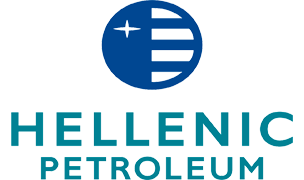
Continuous Operation & Preparedness for Emergency Situations
-

45 emergency drills
in all Group facilities επιστροφή στην αρχή
επιστροφή στην αρχή55,000 man-hours of training
in all Group facilities and subsidiariesEnvironment, Energy &
Climate ChangeContinuous Operation & Preparedness
for Emergency SituationsWhy is it material?
Immediate response to emergencies, continuity of business operations and/or immediate return to normal operation effectively limits potential incidents related to employees, the local community, the environment, the company’s reputation and its finances. Preparedness for uninterrupted operation is linked to the company’s sustainability.
Our approach
The Group has developed a Corporate Crisis Management and Business Continuity Plan with clearly defined roles and responsibilities interconnected to each facility’s emergency plan. Plans include response strategies to handle possible scenarios related to internal and external emergencies.
There are also procedures for:
- Internal and external communications, including periodic tests for emergency calls.
- Access to staff resources and equipment.
- Access to basic information (e.g. MSDS, plans, etc.).
- Communication with other companies and emergency response bodies including compatibility and plan integration, when and if required.
- Managing third party support.
Along with the emergency procedures, Crisis Management and Operational Continuity Plans are linked to the Group’s respective emergency plans and guidelines to restore operation.
Procedures and Plans are reviewed annually to test the response capability in relation to the original design as well as the readiness/effectiveness of resources, infrastructure and equipment.
Any comments/suggestions resulting from the drill reviews and incident analysis are recorded, monitored and resolved and the plans are revised accordingly.
Our ambition
Our goal is the continuous operation of our facilities, and when this is not possible, to immediately respond to emergencies in order to limit and effectively manage potential impacts as well as assure resources to implement the above.
Each facility, and the Group in general, has developed contingency plans for immediate implementation that are continuously updated according to national legislation, international codes and the results of training drills performed periodically or in emergencies.
Performance
Significant:
- ZERO major accidents or environmental incidents with significant impacts
- 45 emergency response drills in cooperation with the Authorities
- Technology support to improve/develop critical safety systems and emergency plans
- Annual drills conducted for emergency situations (Seveso or marine pollution response exercises) at each facility in cooperation with the local authorities.
Managing emergencies (e.g. Major Accidents Hazards or/and Environmental Incidents of significant impact), is the Group’s highest priority and this is reflected in its performance, since the goal for zero Major Accidents and Environmental Incidents with significant impact was achieved once again in 2018.
We manage all incidents as likely to lead to Major Industrial Accidents and Environmental Incidents of significant impact, which could damage the company’s reputation or finances. Emergency plans (such as fires/marine pollution response/malicious acts etc.) are examined and reviewed annually with the aim of continuous improvement. These plans are closely linked to the Operational Safety Management System, which constitutes the operating and management framework for the integrity of all systems and processes.
There are mutual assistance – cooperation protocols with neighboring companies as well as other refineries to manage emergencies more effectively.
Training
In order to reinforce existing collaboration with other responsible state authorities, but also exchange experience and technical expertise, special training is carried out on an annual basis on site, in terms of field and facility exercises and drills, but also with external entities (Falck Risk Management), in which active members from each local fire brigade, Special Disaster Units as well as the Firefighting Academy, participate.
Next Steps
- Continuous upgrading of firefighting equipment and infrastructures/facilities to support activities required to deal with emergencies. These include systems that warn, update, communicate, restrict, protect personnel, security, etc., depending on the type of emergency and their compatibility with the corresponding external entities/Authorities’ resources.
- Periodic independent assessment (e.g. inspection by an external consultant) regarding fire protection, risks mitigation means and implementation of the recommendations/proposals.
- Improvement of strategies and emergencies’ response time, if deemed necessary resulting from the drills.